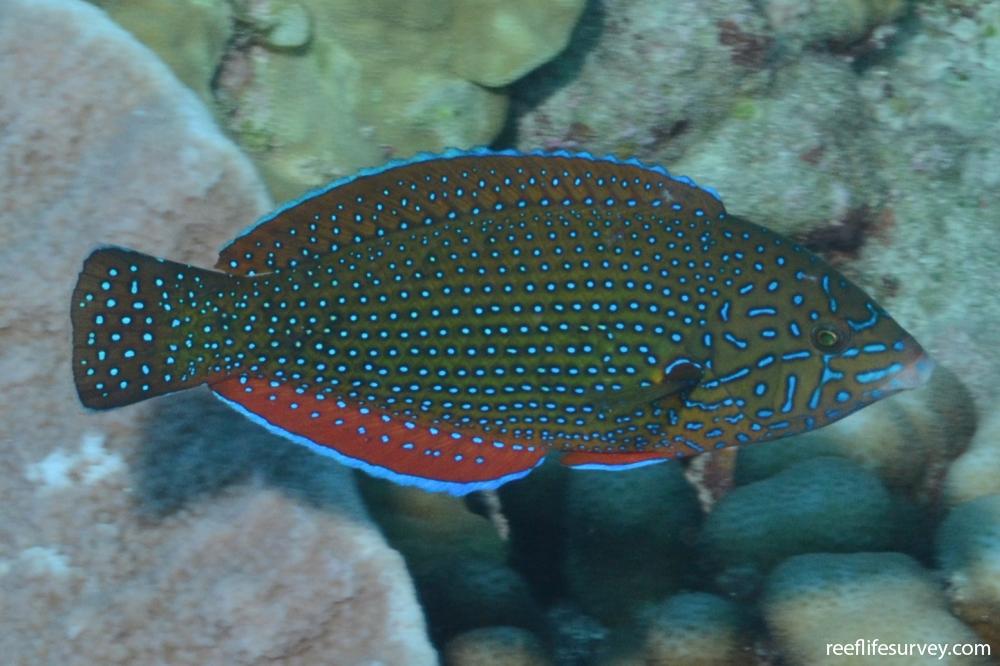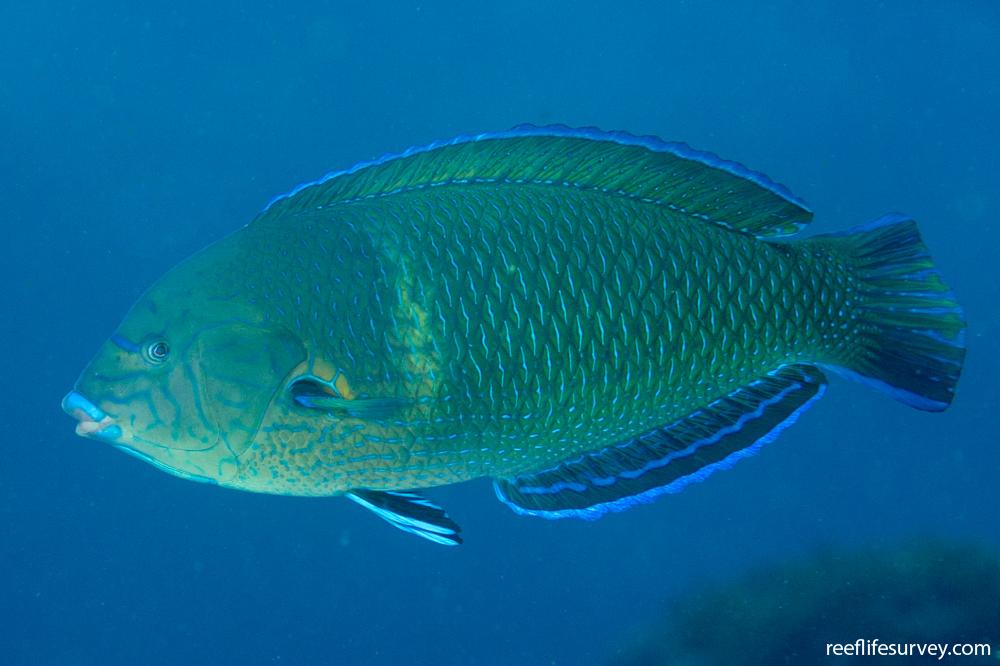Anampses caeruleopunctatus
Diamond wrasse | Bluefreckled Wrasse | Bluespotted Tamarin | Bluespotted Wrasse | Spotted Chisel-tooth Wrasse | Spotted Rare WrasseSimilar Species
Same Genus
Distribution
Temperate Australasia, Tropical Indo-Pacific
Description
Male with dark blue/green high-backed body, light green half bar behind pectoral fin, and a light blue stripe between eyes. Females and juveniles with iridescent blue spots aligned in rows along body, and transparent rear margin of tail. Females with spotted tail and red anal and pelvic fins. Juveniles with no spots on tail and larger transparent margin, smallest juveniles olive with thin brown stripes, and majority of tail transparent. Females form part of mixed schools with other small wrasses. Length to 42 cm.
Information
Max Size: 42 cm
Sea Temperature Range: 17.9-30.9°C
Depth: 3-30m
Habitat Generalization Index: 14.48
Also referred to as the SGI (Species Generalisation Index), this describes the habitat niche breadth of the species. Species with values less than 15 are found in a relatively narrow range of reef habitat types (specialists), while those over 25 may be found on most hard substrates within their range (generalists). Learn more here.
Conservation and Rarity
IUCN Status: Least Concern
Occurrence: Frequent (11.5% of sites)
Occurrence describes how often the species is found on surveys within its distribution. It is calculated as the % of reef sites surveyed by RLS divers across all the ecoregions in which the species has been observed
Abundance: Few (2 per transect)
Abundance is calculated as the average number of individuals recorded per RLS transect, where present.
Edit by: Joe Shields























